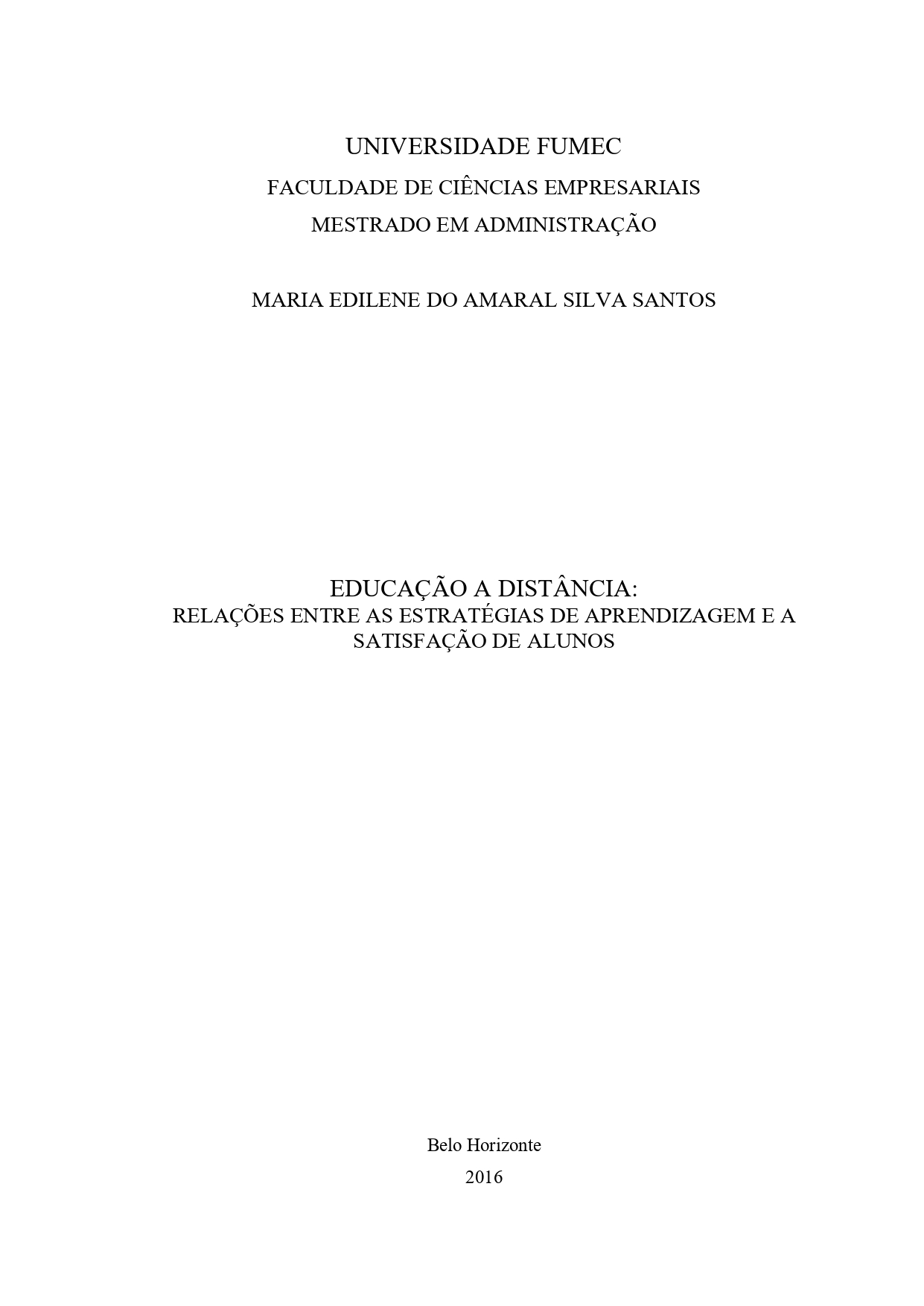Educação à distância: relações entre as estratégias de aprendizagem e a satisfação de alunos

Visualizar/
Data
2016Autor
Santos, Maria Edilene do Amaral Silva
xmlui.mirage2.itemSummaryView.MetaData
Mostrar registro completoResumo
Este estudo buscou estabelecer relação entre as estratégias de aprendizagem adotadas pelos
alunos do Centro de Educação Aberta e a Distância do Instituto Federal Minas Gerais, na
modalidade Educação a Distância, e a satisfação desses alunos com o curso. Para isso, foram
investigadas as estratégias de aprendizagem metacognitivas e autorregulatórias que usam, a
satisfação percebida por eles e a ligação entre essas estratégias e a satisfação desses alunos.
Trata-se de uma pesquisa descritiva, em que a metodologia quantitativa foi aplicada. Compôsse
a amostra por 254 alunos, sendo 160 egressos e 94 regularmente matriculados. A coleta de
dados deu-se por meio de questionário estruturado (survey), enviado ao endereço eletrônico
dos alunos egressos e aplicado presencialmente aos alunos matriculados. Para o tratamento
dos dados, foi aplicada a análise estatística multivariada com uso da modelagem de equações
estruturais. Descobriu-se que os alunos se valem de estratégias de aprendizagem e que o uso
delas lhes possibilita consolidar o conhecimento construído. Tanto as estratégias
metacognitivas, que são as responsáveis por levar o aluno a pensar sobre o seu próprio
pensamento, quanto as estratégias autorregulatórias, que o movem a aprender a aprender, são
de real importância para o aluno da Educação a Distância, que precisa ser ativo e responsável
para que a aprendizagem aconteça de forma exitosa. Tomados em conjunto alunos egressos e
matriculados, os dados evidenciam que 22% deles demonstraram satisfação com o curso que
realizaram. Analisando-se os dados por segmento, foram encontrados resultados bem
distintos. Os alunos egressos demonstraram 31% de satisfação, enquanto os matriculados
apenas 10%. Acredita-se que a diferença entre os cenários possa estar relacionada à inserção
deles no mercado de trabalho. Conforme dados revelados pela pesquisa, 49,4% dos alunos
egressos trabalham na área do curso que realizaram, ao passo que, para os atualmente
matriculados, o maior percentual aparece entre aqueles que nunca trabalharam na área do
curso, com um índice de 42,6%. Concluiu-se que o aluno que já deixou a instituição e
trabalha na área para a qual se capacitou consegue perceber com mais clareza a importância
da capacitação para sua vida profissional, enquanto aquele que não está inserido no contexto
do trabalho não percebe tal relevância. This study aimed to establish the relationship between the learning strategies adopted by the
students of the Centro de Educação Aberta e a Distância do Instituto Federal Minas Gerais, on
it’s e-learning form and the satisfaction of these students with their course. It was researched,
the metacognitive and self-regulatory learning strategies they used, their perceived
satisfaction and investigated the link between strategies and satisfaction. This is a descriptive
research in which the quantitative methodology was applied. The sample was composed of
254 students, 160 graduates and 94 regularly enrolled. Data collection was made of by a
structured questionnaire (survey) sent to the e-mail addresses of the graduating students and
applied in person to the students enlisted. For data treatment was enforced the multivariate
statistical analysis with the use of structural equation modeling. It was found that students
adopt learning strategies and that their use allows them to consolidate the knowledge built.
Both the metacognitive strategies, which are responsible for taking student to think about their
own thinking, and the self-regulation strategies that move them to learn their own learning,
are of real importance for the e-learning student who needs to be active and Responsible for
making the process happen successfully. Taken together, graduated and enrolled students,
data shows that 22% of them demonstrated satisfaction with the course they took. By
analyzing these data by segment, a different results were found. The students graduated
demonstrated 31% satisfaction while those enrolled only 10%. It is believed that the
difference between the scenarios may be related to their insertion on labor market. According
to the research, 49.4% of the graduated works in the area of the course they attended, whereas
for those currently enrolled, the highest percentage appears among those who have never
worked in their field of study, with an index of 42,6%. It was concluded that the student who
has already left the institution and works in some area for which he/she has been trained can
clearly perceive the importance of qualification for his/her professional life while the ones
who are working in their field of study still does not understand this relevance.
